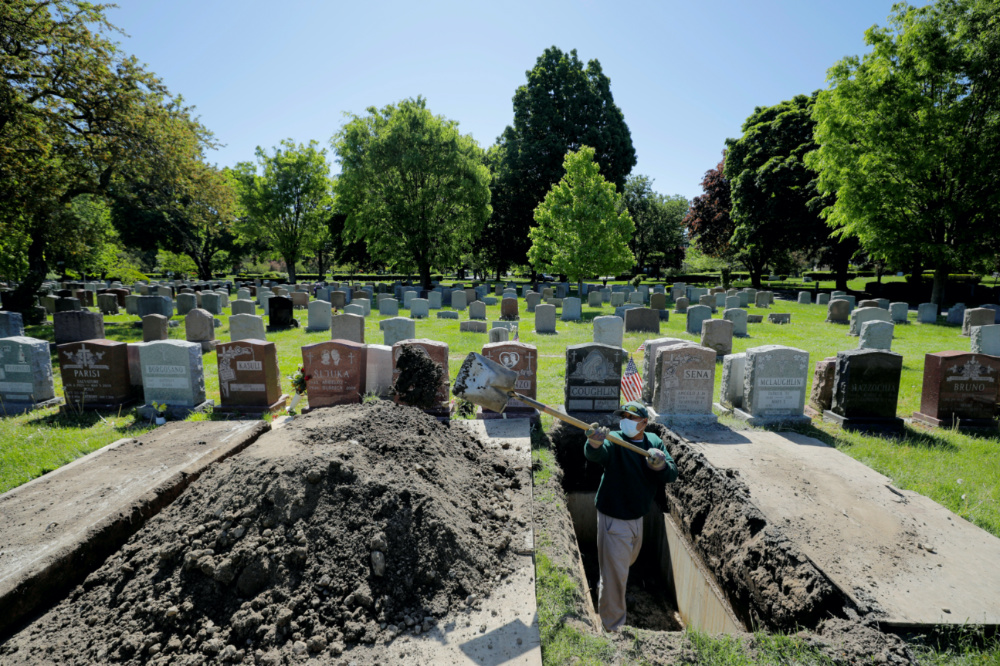Global deaths from COVID-19 have reached one million, but experts are still struggling to figure out a crucial metric in the pandemic: the fatality rate – the percentage of people infected with the pathogen who die.
Here is a look at issues surrounding better understanding the COVID-19 death rate.
How is a death rate calculated?
A true mortality rate would compare deaths against the total number of infections, a denominator that remains unknown because the full scope of asymptomatic cases is difficult to measure. Many people who become infected simply do not experience symptoms.

Roberto Arias prepares a grave for burial at Woodlawn Cemetery during the coronavirus disease (COVID-19) outbreak in Everett, Massachusetts, US, on 27th May. PICTURE: Reuters/Brian Snyder/File photo.
Scientists have said the total number of infections is exponentially higher than the current number of confirmed cases, now at 33 million globally. Many experts believe the coronavirus likely kills 0.5 to one per cent of people infected, making it a very dangerous virus globally until a vaccine is identified.
Researchers have begun to break down that risk by age group, as evidence mounts that younger people and children are far less likely to experience severe disease.
“The death rate for people below age 20 is probably one in 10,000. Over the age of 85 it is around one in six,” said Dr. Christopher Murray, director of the Institute for Health Metrics and Evaluation at the University of Washington in Seattle.
What is a “case fatality rate”?
There has been an apparent decline in death rates when measured against the number of new infections confirmed by coronavirus testing. In places like the United States, that “case fatality rate” has fallen dramatically from 6.6 per cent in April to just over two per cent in August, according to Reuters statistics.
But experts said that the decline has largely been driven by more widespread testing compared with the early days of the pandemic, detecting more people who have mild illness or no symptoms. Improvements in treating the severely ill and protecting some of the highest-risk groups, are also credited with improving survival.
“We are much more aware of potential complications and how to recognize and treat them,” said Dr Amesh Adalja of the Johns Hopkins University Center for Health Security in Baltimore. “If you are a patient who gets COVID-19 in 2020, you would much rather get it now than in March.”
What does that mean for individuals, and governments?
That highlights the need for continued vigilance, as some countries begin to experience a second wave of infections.
For example, researchers in France estimate that country’s case fatality rate fell by 46 per cent by the end of July compared with the end of May, driven by an increase in testing, improved medical care and a greater proportion of infections occurring in younger people, who are less likely to experience severe disease.
“Now, we are seeing a fresh rise in hospitalisations and ICU [intensive care unit] registrations, which means this discrepancy is about to end,” said Mircea Sofonea, a researcher with Montpellier University in France. “We will have to understand why.”
– Additional reporting by MATTHIAS BLAMONT in Paris





